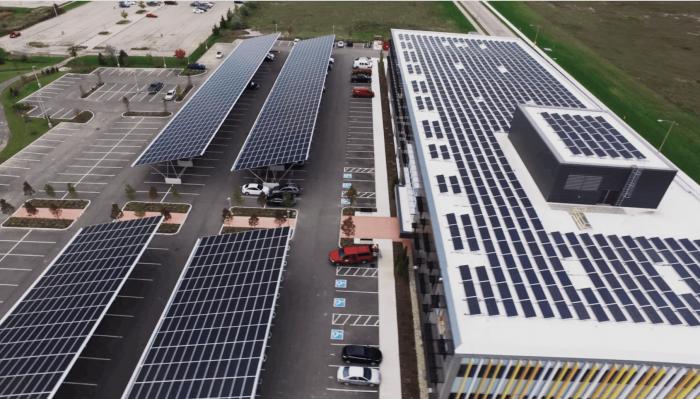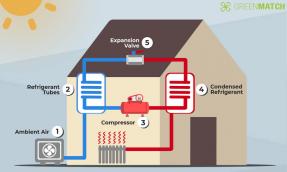Anyone who tells you they know for sure what will happen with the IRA, or Inflation Reduction Act, the Infrastructure Investment and Jobs Act, or IIJA, or the Bipartisan Infrastructure Act, and a host of related clean energy, energy efficiency, health and environmental and infrastructure-related funding, has a crystal ball, or they’re just incorrect. Regardless of someone’s personal politics, this is and will clearly remain a confusing time, and the uncertainty isn’t good for anyone involved in these industries or in any of the directly and indirectly related fields.
What are the most clear and immediate risks?
-
Even already planned hires may not be made, at least in the near future
-
Plants and investments that can be canceled or delayed will be- this is already happening
-
People are going to be laid off
-
Important work will not get done, and delays are already occurring to do uncertainty and inaccessible funds
Immediately upon settling back into the Oval Office on January 20th, Donald Trump signed a host of executive orders, three of which have direct renewable energy and environmental impacts:
-
Withdrawing from The Paris Agreement, again
-
Halting all offshore wind projects
-
“Unleashing American Energy,” which attempted to immediately stop distributing funds for grants and loans under the IRA and the Bipartisan Infrastructure Act, including residential solar credits (dating back in some form to George Bush), energy efficiency upgrade credits, EV credits, EV infrastructure investments, and home energy efficiency rebates.
This was the start of a court battle between a number of nonprofits and the Trump Administration as well as a separate legal battle between 22 states and the Administration to stop the withholding of committed funds. Currently the Administration has rolled back some parent freezes or cancelations but not all, and yet the situation is not clear. Some organizations have not been notified their funds are indeed committed, and some funds have become available while other payment systems remain literally locked. Meanwhile, 3 separate federal judges have ruled that the Administration is not authorized to withhold funding that has already been approved by Congress.
If you are a homeowner or occupant who has already completed projects in 2024 that qualified for federal tax credits or rebates, these commitments should remain in place. It is not clear what all happen to upgrades completed in 2025, which is one reason there’s a concern that people will put off or even cancel planned work.
If you have fairly based some of your future business and hiring on knowing the IRA tax credits and rebates were coming, it’s very hard to know what to do at the moment. Clearly, the imperative remains and clearly, it was reasonable to count on the federal government to keep commitments. Let’s hope cooler heads will prevail.
As the folks at Energy Sage remind us, it’s technically illegal for the Executive Branch to refuse to disburse funds already approved by Congress. So currently, the President has put a 90-day hold on approved spending.
One reason for optimism is that there is bipartisan support for energy efficiency and clean energy initiatives, and certainly for public health project, if not all environmental projects. While Republicans have not yet voiced criticism out loud for freezes and attempted cuts and cancelations, job and investment losses at home will likely cause them stress pretty quickly. There are significant reasons for bipartisan support of these energy and infrastructure-related projects. In the 3 years since the IRA passed, plans for almost $170 billion have been made to make solar panels, wind turbines, electric vehicles. and more, and 80% of the related manufacturing jobs have been created in Republican districts. As far as wind goes, wind energy currently makes up 10% of the US electricity supply, and wind is strong in Republican states like Iowa, Oklahoma, and Texas, with major wind projects planned in Montana, North Dakota, and Wyoming, aside from the planned offshore developments that might be in more Democratic states.
Anther reason to have some optimism is that commitments should not only mean something, but they tend to be legally binding. Tens of billions of dollars have already been committed from the IRA and prior legislation which companies, states and nonprofits have already relied on for investment decisions including hiring given that they were assured of repayment by the federal government. It’s pretty cynical to think the answer is just “Yes,” to the question, “Do you really want to cause this much confusion and angst and this many consequences?” There’s a real risk of backfire and tragically missed goals if these freezes and cuts result in massive job loss and company closures and higher prices - and the risks will quickly become clear and even pile up. The sooner everything gets cleared up and back on track at all, the better. This kind of instability just does not create desired and promised economic results.
Examples of federal confusion and challenges include (but aren’t limited to, it’s just really confusing):
Heatmap has compliled
a list of 50 climate and energy departments and programs that could be targeted according to the January 27, Office of Management and Budget (OMB) memo which paused federal grants. loans and financial assistance programs delineated (unclearly) in recent Presidential Executive Orders, that has since been rescinded admidst much confusion. It's worth reading this list and really gettting a sense of how many programs and people are potentially impacted.
State examples in the press:
- 60 recipients, including states and tribes have been unable to access funds for the $7 billion program to help low-income communities install solar panels
- A 62 megawatt project in Arizona was about to hire its first 4 employees, but the access to existing funds was cut off.
- Plans were canceled to a fund battery cell manufacturing plant, also in Arizona, (NYT)
- Minnesota officials were unable to access non-IRA/infrastructure funding for the Low-Income Home Energy Assistance Program (LIHEAP), which may mean HHS can not help 6.7 million households pay heating and cooling bills as planned.
- A Minnesota company has already delayed opening a new solar cell factory while tax and immigration policies remain uncertain and perhaps unfavorable
- A Montana biofuels plant missed an owed $782 million payment (NYT)
- $1 billion to modernize the grid is on hold (NYT)
- The permit process has stalled for a half dozen solar projects on federal lands in Nevada (NYT)
- The Army Corps of Engineers has stopped the permitting process on over 168 projects (NYT)
- New Jersey has held off awarding new offshore turbines, and Shell has withdrawn from one of the project. Offshore wind farms a part of a $25 billion supply chain across 40 states, including Ohio., Louisiana, and Texas.
- Virginia, New York City, and Nevada do not know if ordered electric school busses will arrive
- South Carolina and Florida may not receive port pollution clean up funds (NYT)
The New York Times also reports that over half of $30 billion clean tech factories that had been planned will be delayed or canceled. Delays and any cancelations or closures cause unemployment and a shrinking economy, which is of course a disaster across any party and state lines. Closures also then affect existing and planned companies along the supply chain as well as local vendors who might have serviced these operations. Again, this is where the consequences will become clear quickly, even more than they have already.
There’s some optimism that states have already been here before, and previously when the federal government withdrew from the Paris Agreement, states and municipalities stepped up and led the way, in principle committing 60%+ of the population to the Paris Agreement anyway. And then there are the somewhat confusing roller coaster court battles underway between nonprofits and the Trump Administration as well as a second case between 22 states and the Administration. Indeed, on Friday February 7, a federal judge ordered the administration not to “pause, freeze, impede, block, cancel, or terminate” taxpayer money already allocated by Congress, for the 22 states suing. A challenge is that we’re seeing almost a “Possession is 9/10s of the law” Wild West where actions come first and consequences may come later, if at all. This is the third decision in two weeks in support of containing disbursement of committed funds to nonprofit and/or states so far the orders aren’t being followed in a way we just have not seen before. Courts move slowly, and it’s faster to damage and dismantle than to rebuild. Energy and environmental professionals worry we’re losing decades we don’t really have to make sufficient progress, all while failing to profit and compete towards great win-win goals. In other words, this situation just doesn’t seem to make any sense.
Some say that confusion IS the strategy but this much confusion is anti-growth and frankly anti-business. One has to hope there will be recognition that we need to rethink and destabilize to avoid extreme economic, public health, and environmental impacts.
“I expect thousands of people to be laid off, I expect workers to be furloughed, and I expect construction projects to halt.” - Jason. Walsh, Executive Director of the BlueGreen Alliance, via The New York Times
“We may not survive this...“We can’t make our payroll.” - Chuck Morse, Executive Director, Thrive New Orleans. Thrive New Orleans was awarded a $500,000 federal grant to teach high school students in disadvantaged areas how to protect their communities from extreme heat and flooding. Mr. Morse has already had to lay off four employees since this funding was frozen. - Washington Post
"As of right now, think of everything on a 90-day pause." - energysage.com
“Our access to the funding system was shut down….I’m holding the bag on $17.5 million in NOAA grants I’m unable to get paid for.” - Andrew Gottlieb, Executive Director of the Association to Preserve Cape Cod -WBUR
Pausing federal funding will harm “public health, public safety and the environment.” - MassDEP Commissioner Bonnie Heiple, via court documents provided by WBUR. “Additionally, not moving forward with the implementation of the Massachusetts Solar for All program will delay or prevent the Commonwealth meeting its objectives of delivering good, well paying jobs, including construction, trades, and installation services needed to support the program.”


The image above belongs to Heliene. The company had been planning to build a new battery cell plant in Minnesota, but those plans are currently on hold due to the current US funding uncertainty.





























Not a Member Yet? Register and Join the Community | Log in